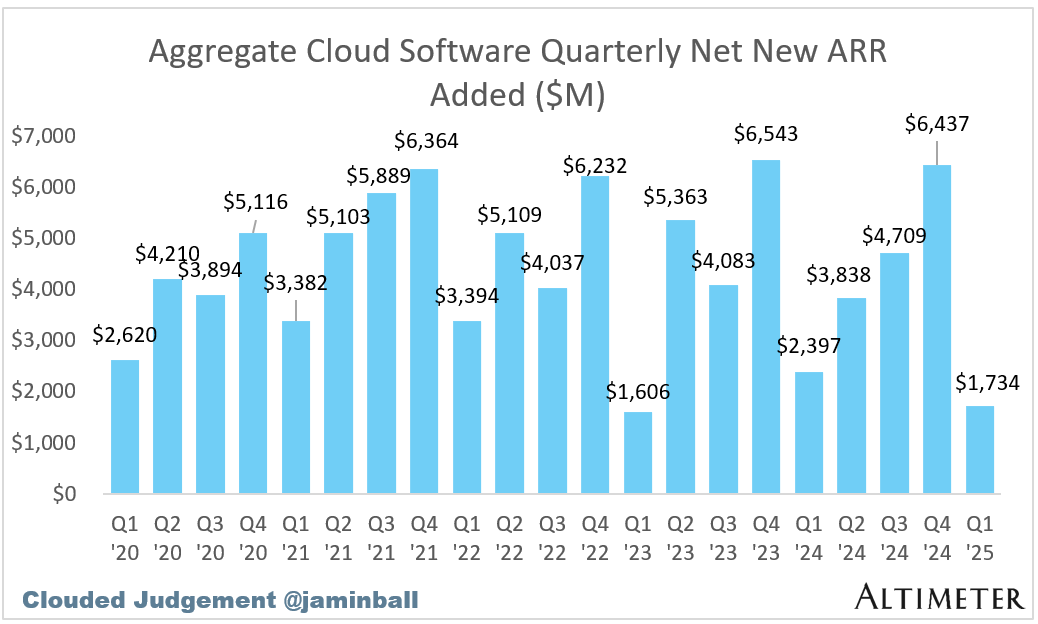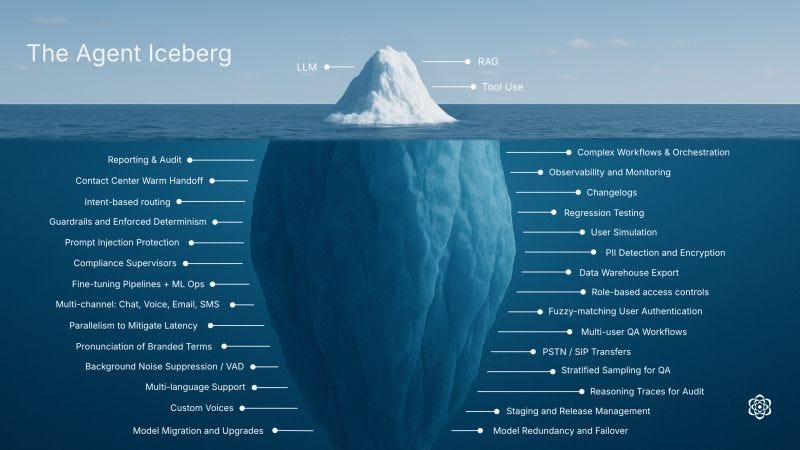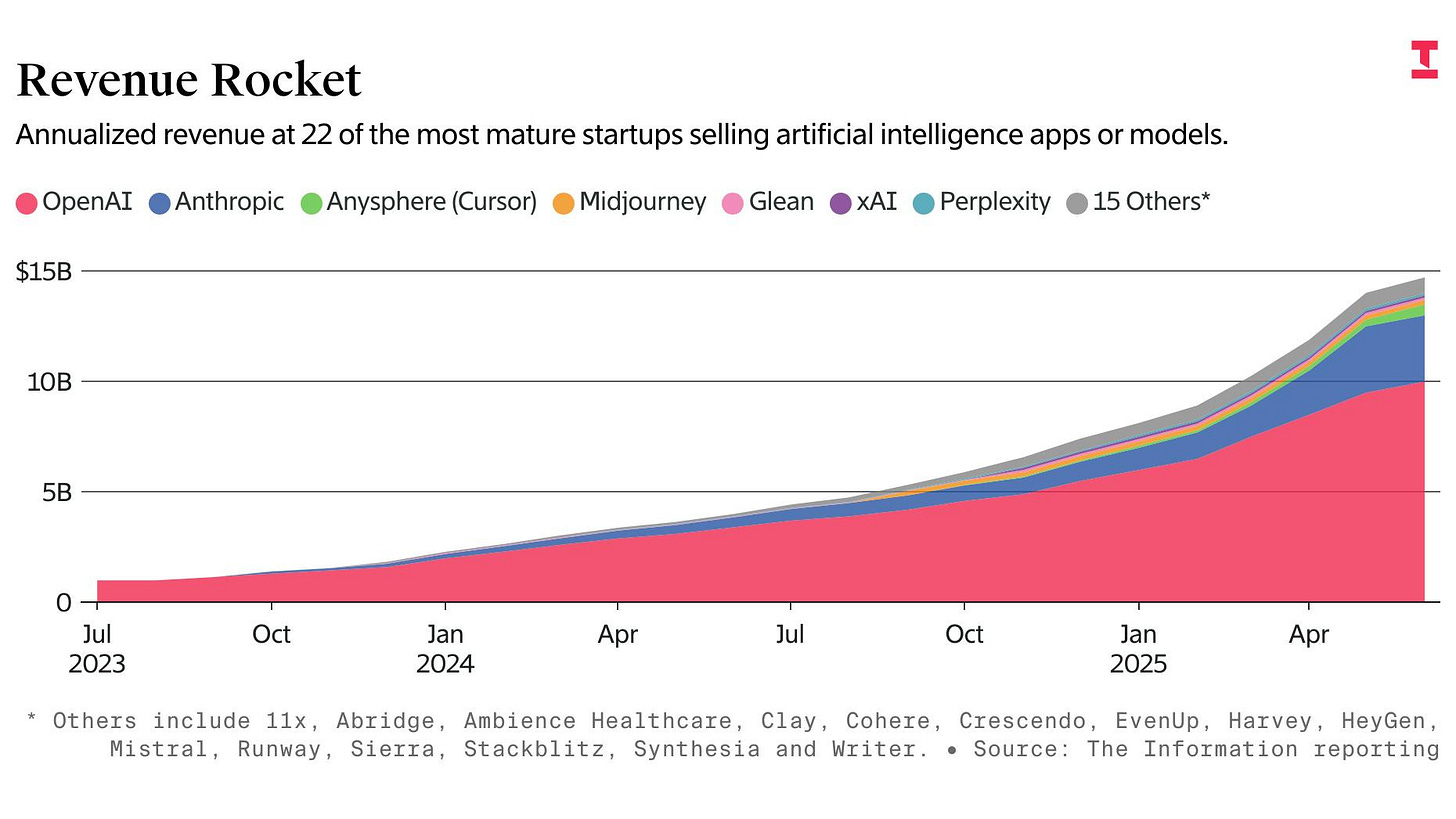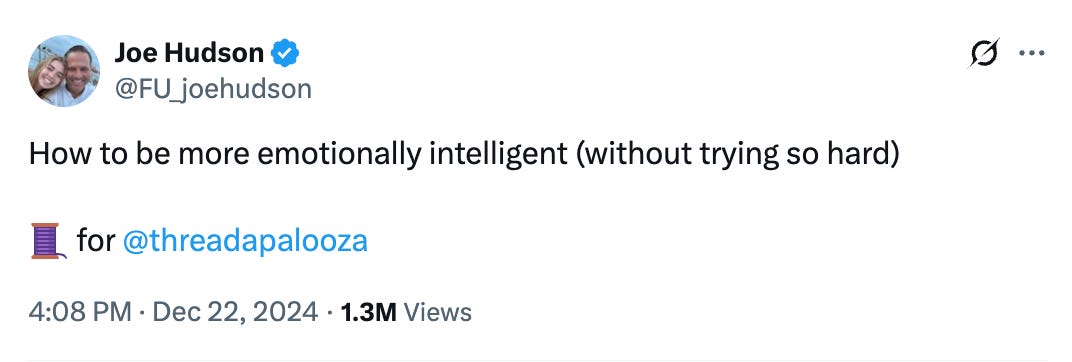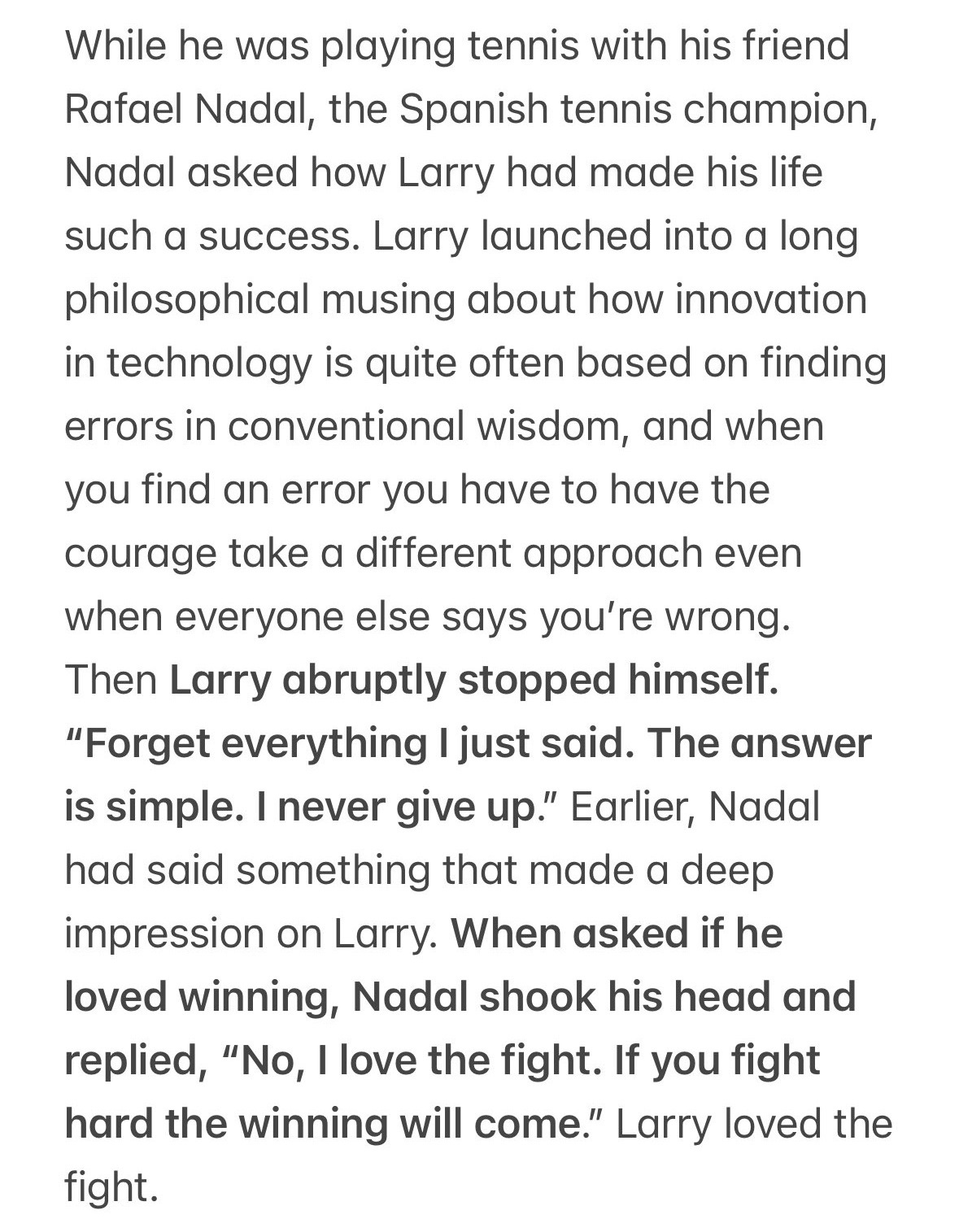Reading Ambitiously 6-20-25
AI, Trust & Level 5 Leadership, OpenAI v. Microsoft, Constraints > Goals, Coatue's Fantastic 40, The "ole" Build v. Buy Iceberg, This is Water, Sam Altman & Marc Andreessen on Jack Altman's pod
Enjoy this week’s Big Idea read by me
The big idea: a lot of AI talk leads to a conversation about trust—it’s one I’m also having with my 5-year-old
This summer, my five-year-old daughter and I have been circling around an important word: trust.
She hears me say it. “I trust you”… to only watch 10 more minutes of Bluey. But it wasn’t clicking.
We talked about it for days. And then one evening, she paused and said: “It means you think I’ll do what I say I’m going to do.”
It wasn’t a new idea to me. But watching this concept come online and seeing it land was one of those joyful milestones in a parent’s life.
Because lately, that same word—trust—has been coming up everywhere.
It’s in nearly every leadership conversation I’m having. And it’s especially loud in the context of AI.
Trust Is the Word Everyone’s Using
Most every conversation about AI, eventually lands on that same word: trust.
Why is that?
Because AI introduces a new kind of uncertainty. About what’s true. About who’s responsible. About how fast we should move and what the risks are if we move too slow.
In environments like this, trust becomes the most important operating principle.
It’s showing up everywhere:
Legal and Security teams rebranding themselves as “Trust” departments
Chief Trust & Integrity Officers appearing on org charts
Procurement, Compliance, and IT rewriting playbooks for explainability, security, and responsible use
In many ways, trust has become the catch-all for everything we can’t fully control—credibility, risk, ethics, reputation.
But that leaves leaders asking a much more personal question: what can I do about it?
How do I build trust? Inside my team, across my organization, and out in the world—at a moment when everything feels like it’s shifting?
There’s no one-size-fits-all answer. But there is a playbook.
And at the heart of that playbook is something deceptively simple: how you lead.
The Kind of Leadership That Builds Trust
Not long ago, I had the chance to sit in on a conversation between two leaders I deeply admire. It was their first time meeting but within minutes, it felt like they’d known each other for years.
They spent the first 45 minutes talking about one thing: leadership.
They weren’t talking about charisma. Or vision. Or tactical brilliance.
What came up instead were words like: Humility. Mission-oriented. Servant-led. Intellectually curious. Self-aware.
Leaders who ask questions instead of giving answers. Who push decisions down instead of pulling them up. Who don’t take away the ownership their people feel—especially when the stakes are high.
As I reflected on the conversation, I was reminded just how important this kind of leadership is right now.
There’s a Name for This
Jim Collins calls it the Level 5 Leader.
In his classic book Good to Great, Collins defines five tiers of leadership—each building on the last. At the top is Level 5: a paradoxical blend of personal humility and fierce professional will.
“They are incredibly ambitious,” Collins writes, “but their ambition is for the institution, not themselves.”
It’s the exact kind of leadership that builds trust.
Not through force of personality, but through quiet consistency. Not by hoarding power, but by empowering others. Not by being right, but by staying grounded in what’s right.
And you can recognize it more by how someone shows up than by what they say.
What We Celebrate Instead
For some reason, the world seems to celebrate a culture that rewards a very different model of leadership.
The “reality distortion field” type—the one who always knows what to do, never listens, and rarely admits they’re wrong. The leader who commands attention, dominates meetings, and bends reality through force of will. They’re often the loudest voice in the room too.
And somewhere along the way, loud started getting mistaken for strong.
When I think about the leaders I’ve trusted most, they didn’t act like that.
They weren’t performing. They weren’t trying to be the smartest person in the room. They were consistent. Grounded. Clear. They listened before they spoke. They asked more than they answered. Dave Duffield has a great line on this, “You have two ears and one mouth, use them proportionately.”
What Level 5 Leaders Actually Do
They ask more questions than they answer.
One CEO I admire showed up to an off-site with a notebook full of questions for their team—not to impress anyone, but to create clarity. The best leaders aren’t the ones with all the answers; they’re the ones asking better questions.
They subordinate ego to mission.
In the strongest leadership cultures I’ve seen, people don’t start with “I,” they don’t hoard credit, and they don’t speak just to be seen. Instead, they speak for the work and for the team.
They care deeply and expect deeply.
The most trusted leaders hold people to account, set a high bar, and make their people feel seen. They don’t let things slide but they don’t let their people fall either.
They teach through ownership, not rescue.
When someone on the team is struggling, it’s tempting to jump in. But trust grows when you stay close, ask questions, and let them solve it. They don’t disempower their people – they develop them.
They sweat visibly.
When the team is up late, they’re up too. When things go sideways, they show up—not to micromanage, but to be in the trenches with the team. As Jocko Willink writes in The Dichotomy of Leadership, leadership isn’t about status—it’s about carrying the weight so others can move forward. That’s why people follow them.
Why This Matters Now
Over the weekend, I saw a meme that said: “Happy Father’s Day. All Dad wants is a break from monitoring the situation.”
It made me laugh—because it’s true. And not just for dads.
If you’re reading this, you’re already monitoring the situation: economic pressure, geopolitical tension, institutional mistrust, and an AI wave that’s reshaping how your business runs.
You’re not waiting for change. You’re leading through it.
And in moments like this, trust is everything. Not the kind you talk about. The kind you build—through steady, consistent behavior.
The kind of leadership that listens first, delegates well, and honors its commitments—even when they’re inconvenient.
Trust doesn’t show up on command. It shows up when leaders keep showing up.
So if you’re building, hiring, navigating, delivering—don’t reach for charisma. Reach for consistency.
Don’t grab the spotlight. As Jocko says, “pick up the burden”.
Or as my five-year-old and I have agreed: just do what you say you’re going to do.
Best of the rest:
🧭 Constraints > Goals — Joan Westenberg offers a clarifying manifesto for anyone stuck chasing outcomes they no longer believe in, arguing that self-imposed limits—not arbitrary goals—are what drive meaningful, aligned, and scalable progress. – Joan Westenberg
⚔️ OpenAI vs. Microsoft, Round 2 — The alliance that built the AI boom is unraveling, as OpenAI weighs antitrust action and fights to escape Microsoft's grip while racing to convert into a public-benefit corporation before a $20B funding deadline. – The Wall Street Journal
📱 Social media passes TV as top news source — Americans now get more news from social platforms than television, marking a generational shift in trust, attention, and distribution—Nieman Lab
Charts that caught my eye:
Coatue East Meets West 2025 Keynote (Coatue)
→ Why does it matter? Coatue just left Apple off its list of the 40 most valuable tech companies by 2030. Philippe Laffont and team are tilting their lens toward AI infrastructure, platform-native software, and crypto rails—while legacy hardware and mobile ecosystems fade into the background. In Coatue’s mind the next decade belongs to companies building the foundation and application layers of the AI economy.
→ Why does it matter? Cloud software growth cooled meaningfully in Q1. Net new ARR came in 28% below the same quarter last year, despite a strong Q4 finish. That year-over-year drop suggests the rebound is still uneven—and that last quarter’s strength may have been more about budget flush than a sustained demand trend. AI tailwinds are real, but they’re not a substitute for distribution, product-market fit, or disciplined execution.
→ Why does it matter? The iceberg is back (thanks Bret Taylor) and this time, it’s about AI agents. At the surface, deploying LLMs looks deceptively simple: plug in an API, maybe add RAG or a few tools. But beneath that clean interface lies a stack of hard engineering problems—security, observability, QA, orchestration, compliance—most of which never show up in demos. This image captures the stakes of the current build vs. buy moment in AI. Just like early SaaS, success isn’t about flashy prototypes. It’s about sweating the details under the surface.
→ Why does it matter? According to The Information, ‘AI Native’ startups have now passed $15 Billion in annualized revenue with OpenAI leading the way.
→ Why does it matter? Goldman Sachs provides a useful lens on what’s driving software valuations: growth or profitability. Over the past five years, investor preference has shifted with the macro environment—favoring growth during expansion, and profitability during periods of uncertainty. Today, growth is once again the dominant factor, with a correlation ~2.7x higher than profitability. In a market that’s still absorbing geopolitical risk and interest rate volatility, that shift says a lot about where conviction is returning.
Tweets that stopped my scroll:
→ Why does it matter? Every generation rediscovers the same truth: the best business wisdom often comes from people who built things with their hands, not just spreadsheets. Les Schwab, pipe in mouth and typewriter in lap, was one of those builders. His autobiography, a favorite of Charlie Munger, isn’t a playbook for blitzscaling. It’s a blueprint for dignity: profit-sharing, radical delegation, frontline-first leadership, and a deep belief that you win by making others successful. In a tech era obsessed with leverage and abstraction, Schwab’s voice cuts through—earnest, blunt, and grounded in mud and calluses. The advice still holds. Maybe now more than ever. You’ll want to hear David Senra’s latest episode on him on the Founders Podcast—episode 330.
→ Why does it matter? Joe Hudson’s thread reframes emotional intelligence as awareness, not effort. The core idea is that many of our patterns—overthinking, people-pleasing, self-criticism—stem from unexamined fear or avoidance. Emotions like anger, anxiety, and overwhelm aren’t problems to fix but signals to understand. He challenges the belief that love, purpose, or confidence must be earned, and instead invites us to see them as natural states that return when we stop performing. The message is clear: emotional clarity starts with self-honesty, not self-improvement.
Worth a watch or listen at 1x:
→ Why does it matter? Bob McGrew, OpenAI’s Head of Research, argues that the real value of private data wasn’t the data itself, but the human labor it took to collect it. In his view, AI now makes that labor effectively free—models can simulate interviews, analyze case studies, and process information at scale in ways that rival or exceed what companies built over years. As a result, general-purpose models are in some cases outperforming custom ones trained on proprietary data. It’s not a settled conclusion, but it raises an important question: is the moat what you know or how fast you can adapt?
→ Why does it matter? David Foster Wallace’s “This is Water” is a commencement I continuously come back to. It’s one of the clearest explanations I’ve found for what it actually means to live consciously. Wallace argues that the real value of a liberal arts education isn’t knowledge, but awareness—the ability to notice your default settings, choose what to pay attention to, and assign meaning with intention. He unpacks how easily we slide into self-centeredness and unconscious worship of things like money, status, or intellect. It’s a reminder that the work of being awake in everyday life is the job of a lifetime.
→ Why does it matter? First of all, Jack Altman, Sam Altman’s brother, is on 🔥 with his new podcast, and this episode with Marc Andreessen is worth a listen. Marc’s main point is clear: tech companies are coming for everything, and they’re getting really big. He compares this moment to the rise of industrial giants a century ago. Marc’s view is that software is no longer just eating the world—it’s rebuilding it.
→ Why does it matter? This is a unique episode with Sam as he’s interviewed by his brother, Jack. Apparently, Meta is offering $100m signing bonuses to OpenAI’s top researchers. Wow!
Quotes & eyewash:
→ Why does it matter? Never give up!
→ Why does it matter? Ginni Rometty was IBM’s CEO when I first entered the workforce. She used to say, “Growth and comfort cannot co-exist”—a line that’s never left me (certainly if you read week to week, it comes up in here a lot). It’s the perfect lens for this idea: that real growth happens in the hard, uncomfortable stretch most people avoid. When you hit that last 20%—when things get painful, illogical, even a little obsessive—you’re not off-track, you’re finally on it.
The mission:
The Wall Street Journal once used ‘Read Ambitiously’ as a slogan, but it became a challenge I took to heart. If that old slogan still speaks to you, this weekly curated newsletter is for you. Every week, I will summarize the most important and impactful headlines across technology, finance, AI and enterprise SaaS. Together, we can read with an intent to grow, always be learning, and refine our lens to spot the best opportunities. As Jamie Dimon says, “Great leaders are readers.”









